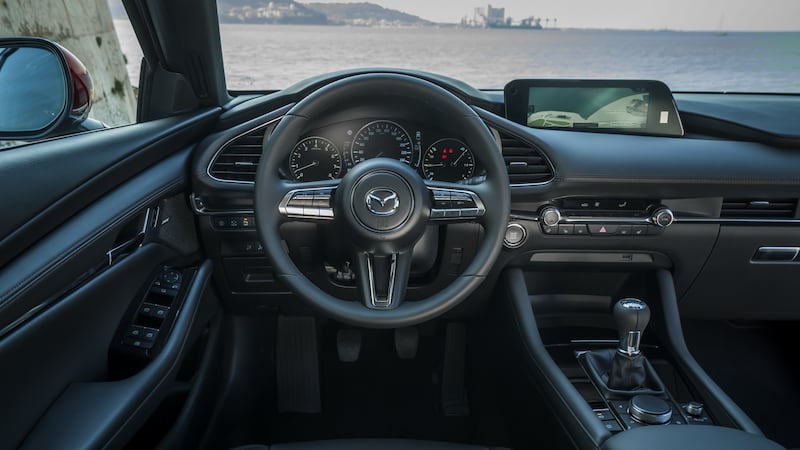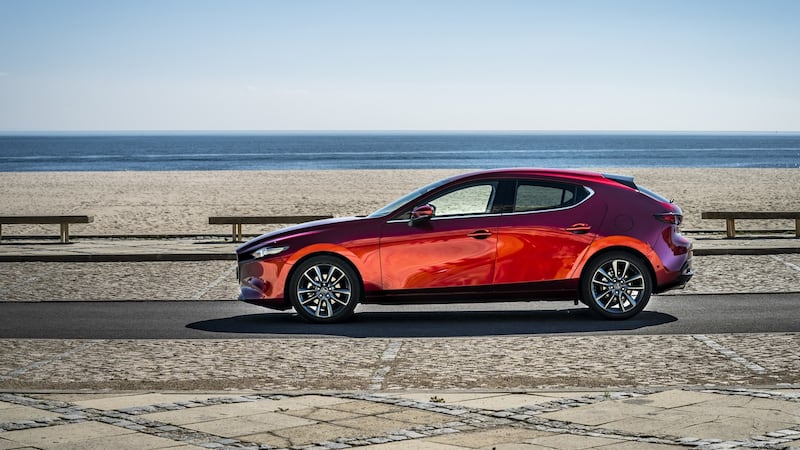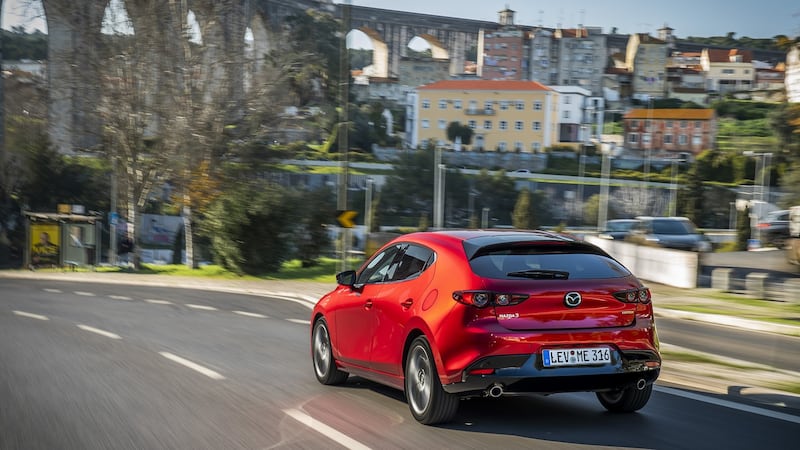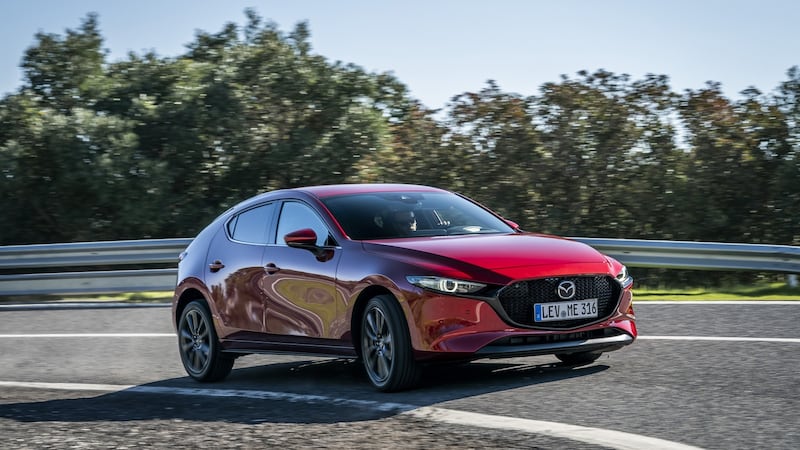There are relatively few mundane, everyday, family-friendly objects that flirt with aesthetic perfection, but the ones that do really stand out.
Western Electric's Model Number 302 telephone is one – known as the "Lucy Phone", because of its regular appearances on I Love Lucy (ask your grandparents, kids) the shape of the 302 is still, even in this wireless era, what a phone really looks like in your head.
There are some Seiko watches, far more affordable than their over-blown Swiss rivals, which look to my eyes far more attractive in their simplicity than any Rolex or TAG. There is Jony Ive’s original iPod, a never-bettered slice of modern industrial design, with a control system so simple that you never needed to refer even once to the user manual.
Then there is the new Mazda 3. Ever since Mazda introduced its "Kodo – soul of motion" design strategy a decade ago, its cars have been becoming steadily better-looking. The current Mazda 6, for example is so handsome that it can outshine passing Maseratis. Better than that is this new Mazda 3, a five-door hatchback so perfect in its proportions, so delicate in its surfacing, that I honestly think it belongs more on a museum plinth than a suburban driveway.

Okay, so the "Soul Red Crystal" metallic paint, which costs as much as a decent summer holiday, helps. So too does the warm and mellifluous spring sunshine in Lisbon, our destination for the test drive, but even so; this is a seriously handsome car. From the way that massive grille seems to hoover up the road, to the almost total lack of adornment of the carefully sculpted side panels, to the way the four round lights peep out of the bodywork at the back, almost as if they had been discovered there by the probing chisel of a sculptor. This is, I would remind you, a humble five-door family hatchback, not a multi-million euro supercar.
Then again, the whole mission of the new 3 is to blur the lines between everyday mass market and premium car making. Mazda’s mission was to bring Lexus-style “Takumi” craftsmanship to the family car sector, and this it most certainly has done. Slip into the cabin, and feel the way the high-backed seats hold you in an ergonomically ideal position. Feel the perfectly judged width of the steering wheel rim, the silky smoothness of the switch actions, the tactility of the materials. This is a properly high-end cabin design, and once again I’ll remind you it’s in a Golf rival.
Underneath, there is a new chassis – stiffer and safer than before – and new engines. Those expecting an electric powertrain will have to wait a while, but Mazda is working on them. For now, there’s a new mild-hybrid petrol, and a. . . err. . . yup, it’s a diesel.

"Diesel is good. You can make diesel clean, and not just on paper or in the laboratory, but in the real world" Christian Schultze, Mazda Europe's director of technical research, told The Irish Times. "The raw emissions coming from our new 1.8-litre diesel are so low that we do not need an AdBlue injection to clean them up. We can instead use a simpler, lighter, more affordable NoX trap."
Whatever about the emissions, customers are likely to still be convinced by the 1.8 SkyActiv-D’s fuel consumption. With 116hp and 270Nm of torque, this new engine (it replaces the old 1.5 diesel, and will in time replace the larger and more powerful 2.2-litre engines) has performance that, while not thrilling perhaps, is right in the ballpark for a family diesel. Its economy though, is something else again. On a mixed journey of motorway, main road, town, and a short burst of mountain road driving, we scored overall consumption of 4.6 litres per 100km. That’s 61.4mpg, and either right on the claimed consumption money (if you’re talking about the NEDC-2 test figure of 4.1 litres per 100km) or actually slightly better than Mazda claims under lab conditions (the tougher WLTP test records 5.0 litres per 100km).

So diesel ain’t dead? No, and nor ever was it really. Mazda Ireland reports a steady demand for diesel from its rural dealerships, suggesting that there’s still a strong town and country divide on the diesel/petrol/hybrid debate. Even so, the 3 will likely reach a 65 per cent majority of its customers with a petrol engine, but this time it’s a petrol hybrid. Well, almost. It’s actually a mild-hybrid, running a simple 24-volt system (simple, and more affordable, than rivals’ 48-volt setups) that uses a small battery mounted under the back seat which can boost the engine’s power by 6kW when needed, or helps to save fuel by taking care of various electrical subsystems and the sharper-reacting stop-start system. Oh, and the 2.0-litre engine has cylinder deactivation to help save yet more fuel.
2.0-litre? In a family hatchback? Oh yes, and yes, unquestionably, there will be some who will be put off by the large engine capacity, so Mazda’s dealers have some work to do convincing them. Its engineers are firm on the matter though. “Downsizing, downsizing, smaller is better,” said Schultze, adopting a mocking falsetto voice. “But it’s not, and we at Mazda always say we do right-sizing. A larger capacity, naturally aspirated engine is better, especially when it comes to the gap between official cycle fuel consumption, and what you get in the real world.”
So it proves. With the faint extra kick from the mild hybrid system all but undetectable, you do have to work the 122hp, 213Nm, engine harder than one of its turbocharged rivals, but that’s not really a hardship – Mazda has worked very, very hard on the 3’s noise suppression and refinement, and it shows. Plus, the engine actually has a rather pleasantly gruff note when you rev it out. Without a turbo to cover up your mistakes, you have to work a little harder too, preserving momentum and choosing your moments to change gear (with the surprisingly long-throw six-speed manual transmission) with care. It’s worth it though.
Thrash it, like this, and you’ll get 7.5 litres per 100km economy. Drive with a touch more care and gentility, and you should get about 6.0 litres per 100km; again, that’s very close to the lab figures.

The 3 handles really quite beautifully, in spite of being potentially hamstrung by cheap torsion bar rear suspension (you’ll notice it less in the cornering balance, more in the occasionally thumpy ride quality). The steering is a touch too light, but the fluid way it carves through corners (helped by the “G-Vectoring Control Plus” system which juggles the torque of the engine, and the brakes, to help smooth out your steering inputs) is as much a joy to behold as is the exterior styling.
On more mundane fronts, the rear seats are adequately spacious, but the rising windowline means they’re a bit dark and enveloping for smaller passengers. The boot is only okay, at 358 litres, but it is deep and well-shaped, so that helps. Standard safety kit includes radar-guided cruise control, and active lane-keeping and the autonomous emergency braking can now spot pedestrians and cyclists by night, as well as by day.
Price-wise, Mazda is closely mirroring Toyota’s prices for the Corolla, which is to say it’s a bit pricey. Basic 2.0-litre M-Hybrid models start at €26,295 while the cheapest diesel is €28,715. To mollify that a bit, standard equipment is very good, and includes a heads-up display, that 8.8-inch infotainment screen, radar cruise control, LED headlights, blind spot monitoring, and active lane-keeping steering. Expensive? Yes, but Mazda claims that its buyers don’t bother much with affordable entry-level models; they tend to go for mid-to-high-spec cars. Then again, is it vulgar to talk about money when describing a work of art?
The lowdown: Mazda 3 2.0 SkyActiv-G M-Hybrid
Price: €30,795 as tested
Power: 122hp.
Torque: 213Nm.
0-100km/h: 10.4sec.
Claimed economy: 5.1 litres/100km (55.3mpg). CO2 emissions (motor tax): 117g/km (€200)
Verdict: The best looking new family hatch is also delightful to drive.
Our rating: 4/5









